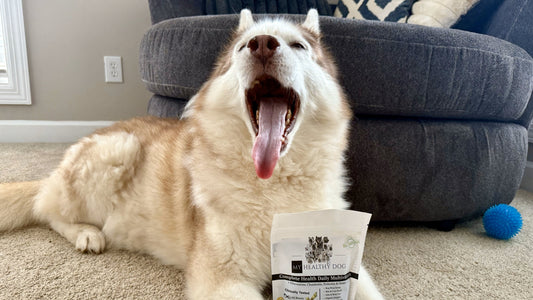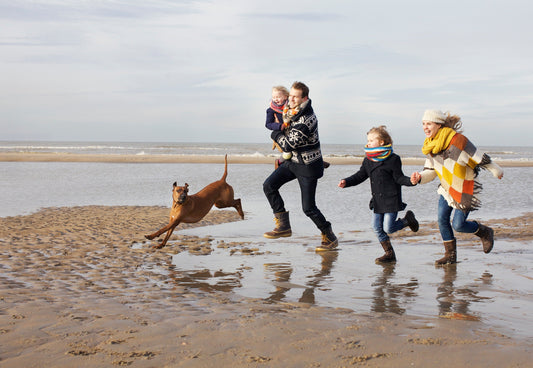The Lakeland Terrier, with its wiry coat and lively personality, is a breed that embodies both spirit and fearlessness. Known for its exceptional hunting skills and friendly nature, this British breed is both a skilled worker and a loving family companion. This article explores the detailed origins, striking appearance, and character traits of the Lakeland Terrier, along with essential care tips to ensure these spirited dogs lead healthy, fulfilling lives.
Breed Summary
Origin and History
The Lakeland Terrier hails from the Lake District of England, where it was developed in the 19th century. Bred to hunt and control foxes, otters, and other vermin, the Lakeland Terrier was prized for its courage, agility, and tenacity. The breed's ancestors include the Bedlington Terrier and the Old English Wirehaired Terrier, among others. Recognized by the Kennel Club in 1921, the Lakeland Terrier has since gained popularity for its spirited nature and versatility, making it a cherished companion and show dog.
Appearance
Lakeland Terriers are small, sturdy dogs, standing between 13.5 to 15 inches tall at the shoulder and weighing between 15 to 17 pounds. They have a well-proportioned, athletic build with a dense, wiry coat that can come in various colors, including black, blue, liver, red, and wheaten, often with saddle markings. Their expressive, dark eyes and V-shaped ears add to their alert and intelligent expression. The breed's overall appearance is one of strength and agility, reflecting its working heritage.
Temperament
Lakeland Terriers are known for their spirited, intelligent, and affectionate nature. They form strong bonds with their families and are particularly good with children and other pets. Despite their hunting heritage, they are friendly and sociable, making them excellent companions. Lakeland Terriers are intelligent and eager to please, making them highly trainable, though they can be independent and require consistent, positive reinforcement. Their lively nature means they thrive on human companionship and can become anxious if left alone for long periods.
Health Outlook
The Lakeland Terrier has a relatively robust health profile with a lifespan of 12 to 15 years. However, they are prone to certain health issues, including hip dysplasia, Legg-Calvé-Perthes disease, and lens luxation. Common skin and hair conditions, such as dry, itchy skin, can also affect Lakeland Terriers. Using a premium dog shampoo designed to moisturize and protect sensitive skin can help alleviate these issues. Such shampoos offer benefits like reducing itching, maintaining a healthy coat, and preventing infections.
Nutritional Requirements
A balanced diet is crucial for the Lakeland Terrier's overall health and well-being. High-quality dog food rich in protein and low in fillers is ideal. Given their moderate activity level, Lakeland Terriers benefit from a diet that supports their energy levels and maintains a healthy weight. Including a complete multivitamin in their diet can ensure they receive all the necessary nutrients, supporting their immune system, joint health, and overall vitality.
Exercise Requirement
Lakeland Terriers are moderately active dogs that require regular exercise to stay happy and healthy. Daily walks, combined with playtime and opportunities to engage in mental stimulation, are essential. Despite their moderate exercise needs, they are also content to relax and spend time with their families, making them versatile companions.
Pros and Cons of Owning a Lakeland Terrier
Pros:
- Spirited and affectionate, excellent with children and other pets.
- Intelligent and trainable with the right approach.
- Cheerful and versatile, making them delightful companions.
Cons:
- Prone to certain health issues, including hip dysplasia and lens luxation.
- Requires regular grooming to maintain their wiry coat.
- Sensitive and can be anxious if left alone for long periods.
Space Requirements
Lakeland Terriers can adapt to various living environments, including apartments, due to their small size. However, they do best in homes where they receive plenty of attention and companionship. Their moderate exercise needs and love for human interaction make them well-suited to indoor living.
Suitability for Elderly
The Lakeland Terrier's gentle and affectionate nature makes them excellent companions for elderly owners. Their small size and moderate exercise needs are manageable, and their love for snuggling provides great companionship.
Suitability for Kids
Lakeland Terriers are good with children due to their friendly and playful nature. They are patient and enjoy the company of kids, making them a great addition to a family. Supervision is always recommended to ensure harmonious interactions, especially with younger children.
Cost
The cost of a Lakeland Terrier puppy can range from $1,500 to $3,000, depending on the breeder's reputation and the lineage of the pup. Additional costs include food, grooming, healthcare, and training.
What Should the Owner Be Like?
Owners of Lakeland Terriers should be gentle, patient, and committed to providing regular grooming and mental stimulation. They should be prepared for regular training sessions and consistent, positive reinforcement to manage the breed's sensitivity and intelligence.
Fun Facts
- The Lakeland Terrier was originally bred to hunt foxes in the rugged terrain of the Lake District, showcasing its agility and tenacity.
- This breed is known for its "Lakeland smile," a charming expression that adds to its endearing personality.
Conclusion
The Lakeland Terrier is a spirited and loyal breed that brings joy and companionship to any household. With their friendly nature, intelligence, and charm, they make excellent companions for families and individuals alike. While they come with some challenges, particularly in terms of grooming and sensitivity, the rewards of owning a Lakeland Terrier are immense. For those who appreciate a blend of spirit and loyalty, the Lakeland Terrier is a perfect match.
Are you familiar with the Lakeland Terrier or have this wonderful breed in your family?
Share your stories in the comments!
Share the Article with friends!





